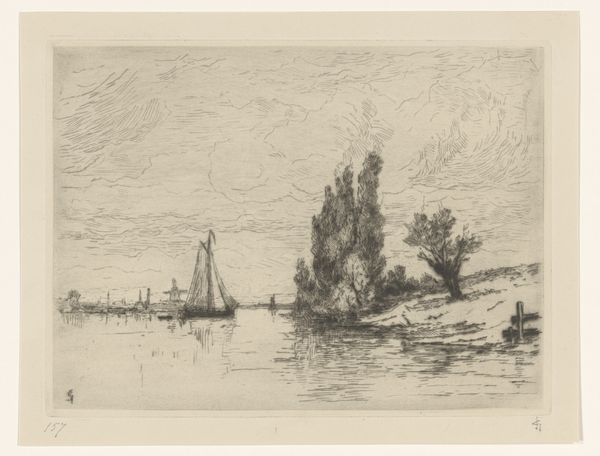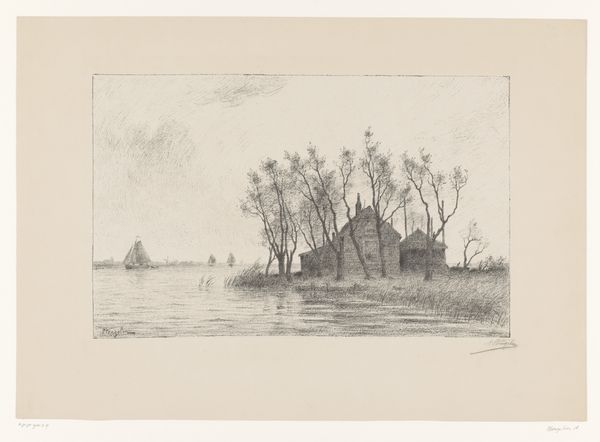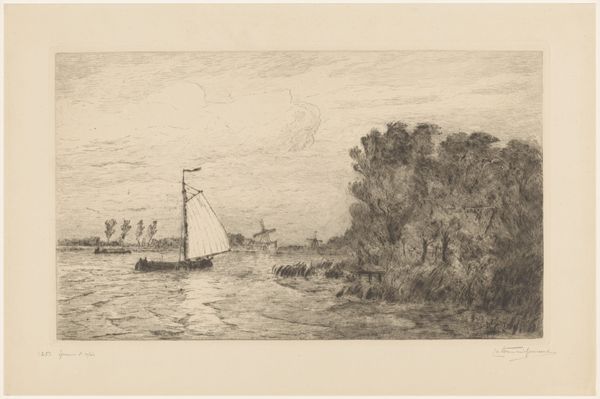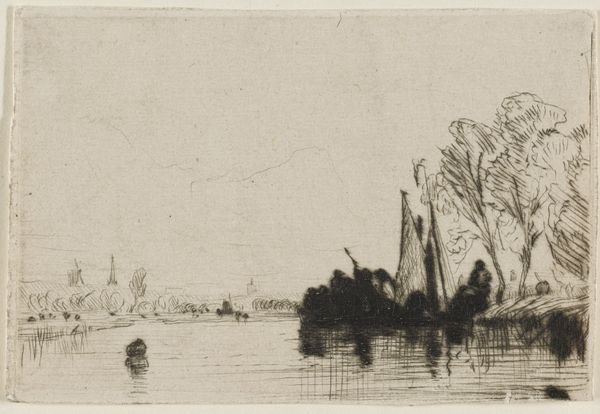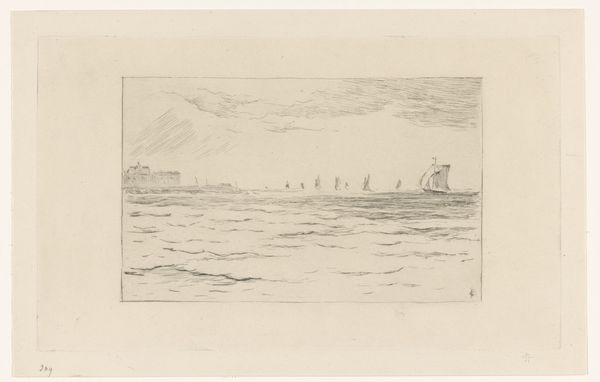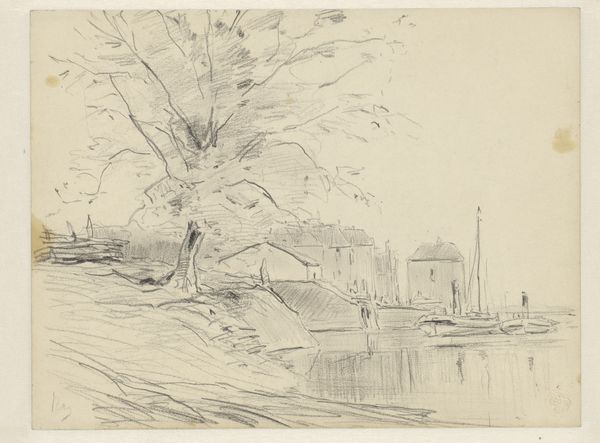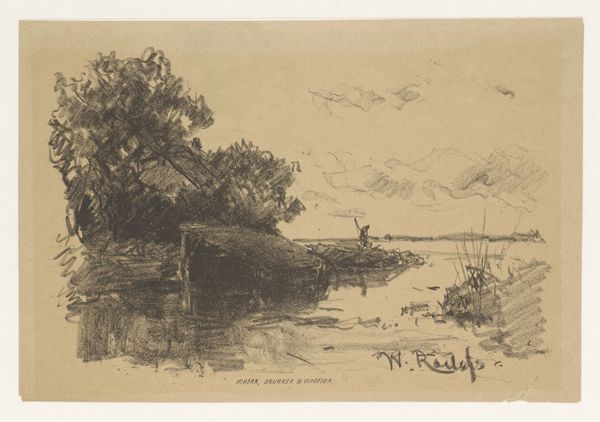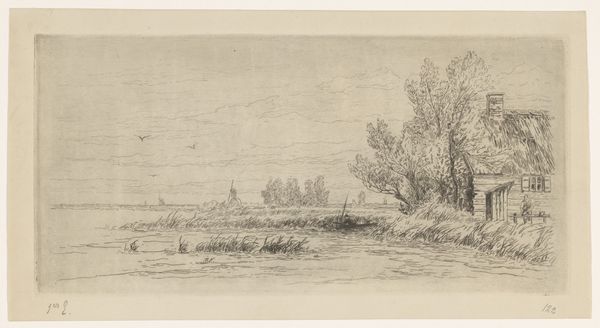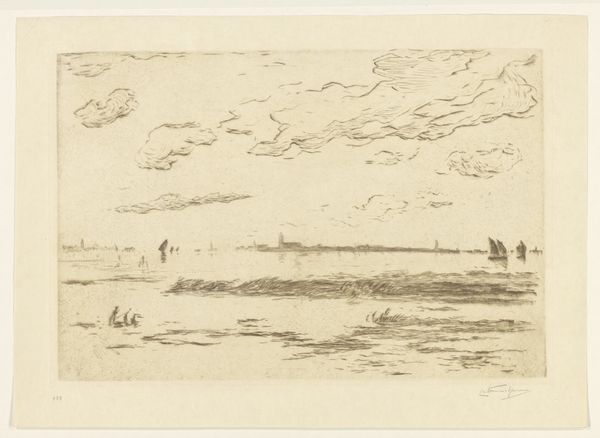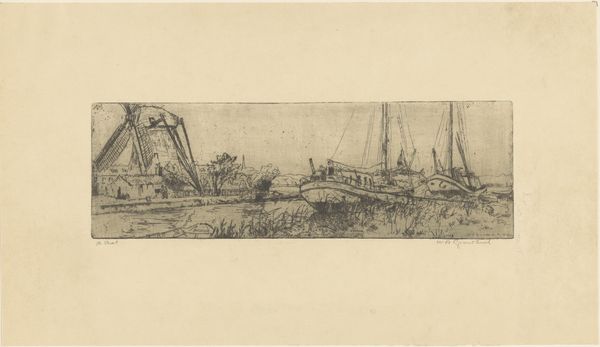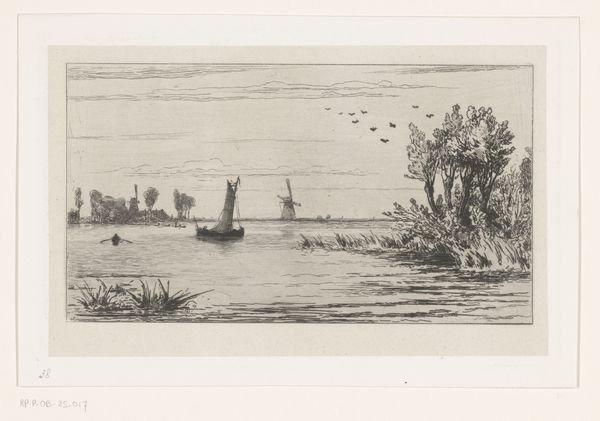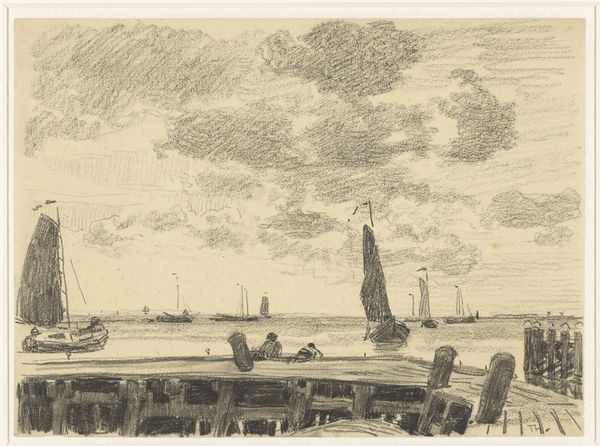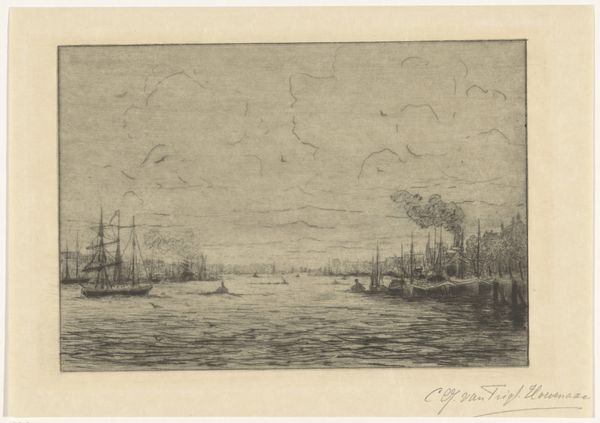
drawing, pencil
#
drawing
#
landscape
#
pencil
#
line
#
cityscape
#
realism
Dimensions: height 175 mm, width 254 mm
Copyright: Rijks Museum: Open Domain
Editor: This is "Oever van de Maas bij Rotterdam," or "Banks of the Meuse at Rotterdam," by Carel Nicolaas Storm van 's-Gravesande, dating sometime between 1851 and 1902. It’s a pencil drawing of a cityscape. It feels peaceful, almost dreamlike. What do you see in this piece? Curator: Immediately, I'm drawn to the visual contrast – the solid, rooted trees in the foreground against the more ethereal depiction of the city. Do you think the artist used that visual language to emphasize a contrast? The solid reality of the present, and the less defined dream of progress, trade and potential signified by the cityscape? Editor: That’s an interesting interpretation. It does create a kind of depth, both physically and conceptually. I hadn't really considered the windmills in relation to the boats. Curator: Windmills and sailboats – they are recurrent visual motifs of Dutch identity and its complex, evolving relationship with the landscape and technology. The wind powered the Netherlands in multiple senses, materially through industry but also conceptually. And psychologically, wind and water together are ever changing forces – do you think there is anything inherently Dutch about rendering an image in graphite in that time? Editor: Well, graphite seems ideal for capturing that subtle atmospheric perspective. Curator: Yes, but it's more than just about accuracy. The artist shows us windmills as an archetype of Dutchness. Perhaps consider this pencil sketch to act as a cultural artifact of its time – the work holds and recreates identity as much as it depicts a recognizable place. The pencil's delicate touch speaks of both vulnerability and enduring legacy. Do you feel it? Editor: I think I’m starting to, yes. Thank you for making me reconsider how symbols influence my perceptions! Curator: Absolutely. Considering this drawing as a set of historically potent visual ideas makes it speak in very particular cultural contexts, to the Netherlands but also beyond.
Comments
No comments
Be the first to comment and join the conversation on the ultimate creative platform.
